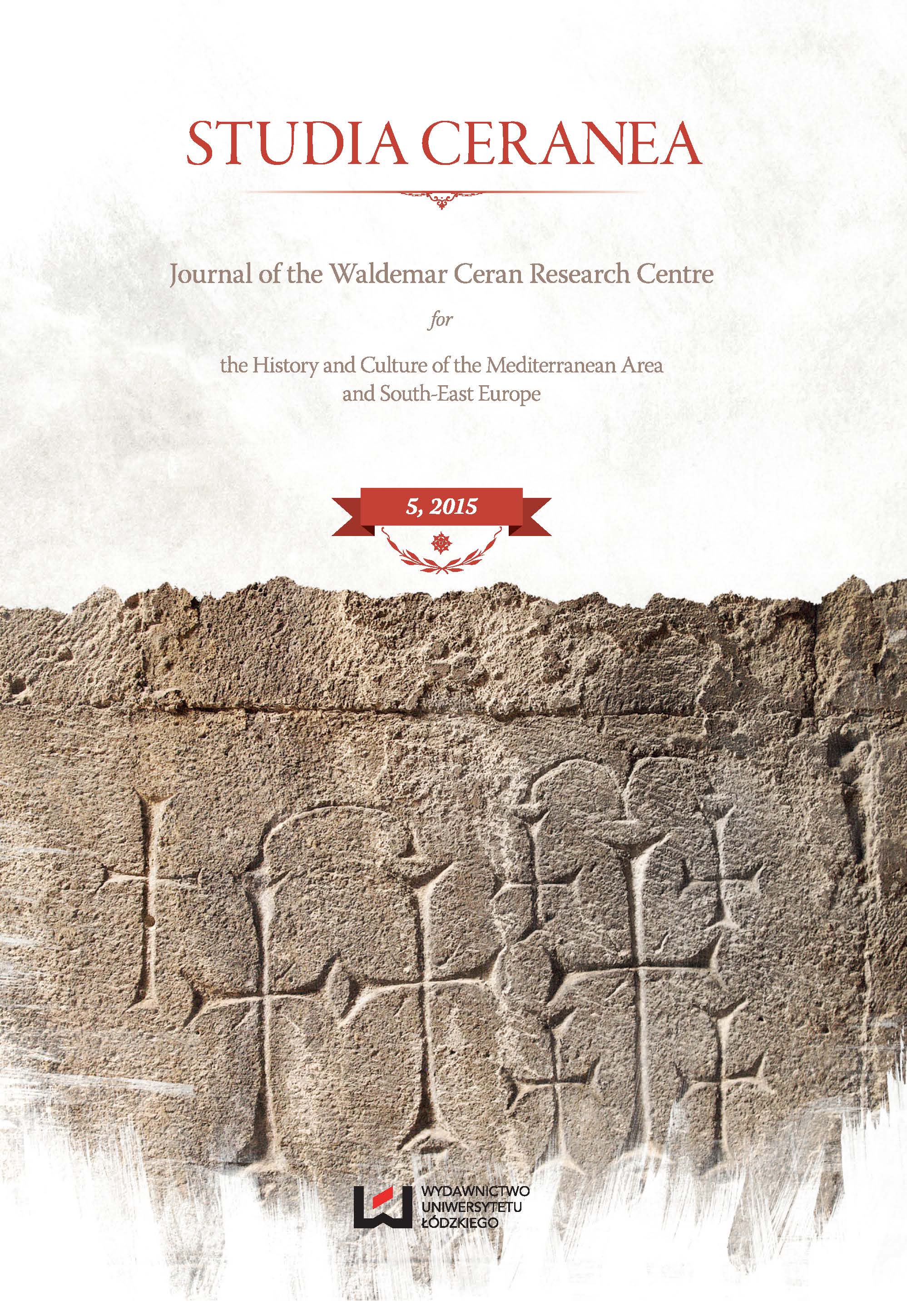The Christian Nubia and the Arabs
DOI:
https://doi.org/10.18778/2084-140X.05.08Keywords:
Nubia, early Christianity, Arabs, Byzantium, Christian Church, Nobadia, MakuriaAbstract
Nubia constituted the area in the Nile Valley in the present day Sudan, the area which spread from the first cataract up to the place where the White Nile meets the Blue Nile. The area was inhabited by the population using a common language – Old Nubian. In the second half of the sixth century thanks to the missions send by the Byzantine Court, Nubia accepted Christianity as a state religion. Nubia immediately found itself in the area of influence of Byzantine culture. Byzantine administration, liturgy of the Eastern Church and the Greek language were introduced. In 641 the Arab conquest of Egypt took place. Soon after that in 642, the Arab army entered the Nubian territory and from this date centuries of clashes and peace treaties characterized relations between Nubians and Arab peoples. The 13th century marks slow decline of the kingdom of Nubia. Hostile Negro tribes from the South and South-West appear in the Mid Valley of Nile. Fights weaken the kingdom; slow islamization of the country follows, royal rule and Christian faith falls and together with those culture and arts deteriorates. The history of military as well as political or commercial Nubian-Arabic contacts over entire period of existence of Christian kingdom of Nubia undoubtedly had to bring about certain artistic trends in Nubia originating from rich heritage of Muslim culture. The culture of Christian Nubia originally based to considerable extent on Byzantine art, in course of time, subjected to more and more intense Arabic influence, significantly changed. Arabic components seen in Nubian church architecture, wall painting and art crafts became predominant, which over following centuries led to creation of Arabic culture of the contemporary Sudan.
Downloads
References
Adams W. Y., Nordström H–Ä., The Archeological Survey on the West Bank of the Nile, Ku 11, 1963, p. 10–46. Blair S., Islamic Inscriptions, Edinburgh 1998.
Google Scholar
Bloom J., Blair S., Islamic Arts, London 1997.
Google Scholar
Erster G., Nubien, Goldland am Nil, Zürich–Stuttgart 1964.
Google Scholar
Gartkiewicz P. M., New Outline of the History of Nubian Church Architecture, BAB 55, 1980, p. 137–144.
Google Scholar
Hägg T., Some remarks on the use of Greek in Nubia, [in:] Nubian Studies. Proceedings of the Symposium for Nubian Studies, Cambridge 1978, ed. J. M. Plumley, Warminster 1982, p. 103–107.
Google Scholar
Islam. Art and Architecture, ed. M. Hattstein, P. Delius, Cologne 2000.
Google Scholar
Jakobielski S., Faras III. A History of the Bishopric of Pachoras on the Basis of Coptic Inscriptions, Warszawa 1972.
Google Scholar
Kirwan L., Studies on the History of Late Antique and Christian Nubia, eds. T. Hägg, L. Tőrők, D. A. Welsby, Suffolk 2002.
Google Scholar
Leroy J., Les manuscrits syriaques ŕ peitures conservés dans les bibliothéques d’Europe et d’Orient, Paris 1964.
Google Scholar
Leroy J., Les manuscrits coptes et coptes-arabes illustrés, Paris 1974.
Google Scholar
Martens-Czarnecka M., Byzantine Models in Nubian Iconography, GAMAR 6, 2010, p. 109–118.
Google Scholar
Martens-Czarnecka M., Faras VII. Les éléments décoratifs sur les peintures de la Cathédrale de Faras, Varsovie 1982.
Google Scholar
Martens-Czarnecka M., The Wall Paintings from The Monastery on Kom H in Dongola, Warsaw 2011.
Google Scholar
Michałowski K., La Nubie chrétienne, AfB 3, 1965, p. 9–26.
Google Scholar
Monneret de Villard U., Storia della Nubia christiana, Roma 1936.
Google Scholar
Plumley J. M., Qasr Ibrim and Islam, ET.SP 12, 1983, p. 157–170.
Google Scholar
Ryl-Preibisz I., Architectural Decorative Elements Recently Discovered at Dongola, [in:] Actes de la VIIIe Conférence International des Études Nubienne, Lille 11 – 17 septembre 1994, vol. II, Découvertes archéologiques, Lille 1997, p. 227–234.
Google Scholar
Säve-Söderbergh T., Preliminary Report of the Scandinavian Joint Expedition, Ku 11, 1963, p. 66–67.
Google Scholar
Tőrők L., Money, Economy and Administration in Christian Nubia, [in:] Études Nubiennes, Colloque de Chantilly 1975, Le Caire 1978, p. 302–309.
Google Scholar
Vantini G., Christianity in the Sudan, Bologna 1981.
Google Scholar
Vantini G., Oriental Sources Concerning Nubia, Heidelberg–Warsaw 1975.
Google Scholar
Welsby D. A., The medieval Kingdoms of Nubia, Pagans, Christians and Muslims along the Middle Nile, London 2002.
Google Scholar
Downloads
Published
How to Cite
Issue
Section
License

This work is licensed under a Creative Commons Attribution-NonCommercial-NoDerivatives 4.0 International License.














